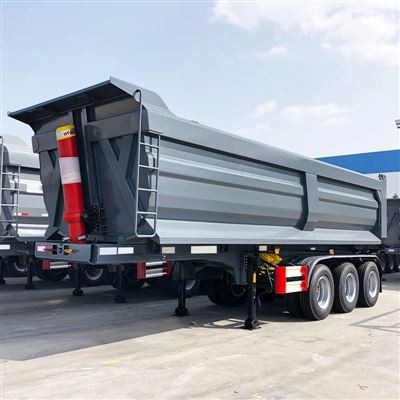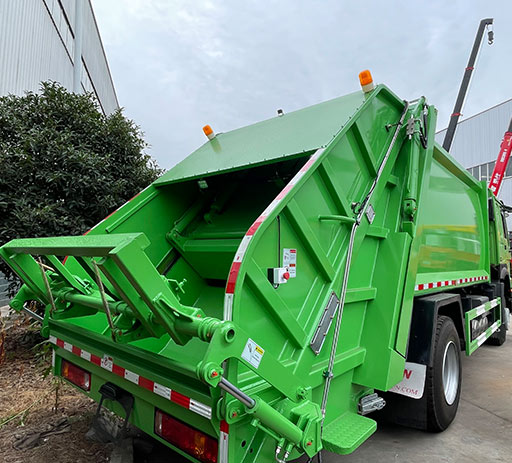Understanding Bobtail Truck Size: A Comprehensive Guide

Bobtail trucks are essential vehicles in various industries, especially in logistics and transportation. Understanding their size and specifications is crucial for those who operate these vehicles, whether for personal use or commercial purposes. In this article, we will dive deep into everything you need to know about bobtail truck size, including key measurements, types, advantages, and practical examples.
What is a Bobtail Truck?
A bobtail truck is a type of truck that carries cargo without a trailer. Typically, it refers to a heavy-duty truck or a tractor without a semi-trailer attached. Bobtail trucks can vary in size and are often used in short-haul deliveries, emergency services, and other applications where maneuverability and accessibility are paramount.
Types of Bobtail Trucks

1. Class 3 Bobtail Trucks
Class 3 bobtail trucks have a Gross Vehicle Weight Rating (GVWR) ranging from 10,001 to 14,000 pounds (4,536 to 6,350 kg). These are commonly seen as delivery trucks in urban areas.
2. Class 4 Bobtail Trucks
Class 4 bobtails have a GVWR of 14,001 to 16,000 pounds (6,351 to 7,257 kg). They are often used for local deliveries and some commercial applications.
3. Class 5 Bobtail Trucks
This category features trucks with a GVWR of 16,001 to 19,500 pounds (7,258 to 8,845 kg). They may have larger cabins and can transport heavier loads.
4. Class 6 Bobtail Trucks
Class 6 bobtails fall into a range of 19,501 to 26,000 pounds (8,846 to 11,793 kg). These trucks include larger deliveries and may be used by waste management services.
5. Class 7 Bobtail Trucks
With a GVWR of 26,001 to 33,000 pounds (11,794 to 14,969 kg), Class 7 bobtail trucks are often employed for heavy-duty transport and may include specialized vehicles for diverse applications.
6. Class 8 Bobtail Trucks
Class 8 bobtails have a GVWR exceeding 33,000 pounds (14,970 kg). This category includes the largest trucks and is often used for long-haul trucking and transportation of substantial loads.
Key Measurements of Bobtail Trucks
In addition to GVWR, several key measurements are essential when considering bobtail truck sizes:
1. Length
Bobtail trucks generally have a length between 20 to 30 feet (6 to 9 meters), although this can vary based on the manufacturer and model.
2. Width
The standard width for most bobtail trucks is around 8.5 feet (2.6 meters). This width allows for efficient navigation on roads and urban settings.
3. Height
The height typically ranges from 10 to 13 feet (3 to 4 meters), depending on the cab and body design of the truck.
4. Wheelbase
A common wheelbase for bobtail trucks is between 10 to 25 feet (3 to 7.6 meters). A longer wheelbase often provides better stability, especially when carrying heavy loads.

5. Payload Capacity
Payload capacity differs among classes but generally ranges from 4,000 to 25,000 pounds (1,814 to 11,339 kg). It is crucial to know your truck’s payload capacity to avoid overloading.
| Truck Class | GVWR (lbs) | Typical Length (feet) | Typical Payload Capacity (lbs) |
|---|---|---|---|
| Class 3 | 10,001-14,000 | 20-25 | 4,000-7,500 |
| Class 4 | 14,001-16,000 | 20-26 | 6,000-8,000 |
| Class 5 | 16,001-19,500 | 20-28 | 8,000-12,000 |
| Class 6 | 19,501-26,000 | 24-30 | 12,000-18,000 |
| Class 7 | 26,001-33,000 | 25-32 | 18,000-24,000 |
| Class 8 | 33,001+ | 30+ | 24,000+ |
Advantages of Bobtail Trucks
Bobtail trucks have several advantages that make them suitable for specific applications:
1. Maneuverability
Due to their smaller size compared to traditional tractor-trailer combinations, bobtail trucks are easier to maneuver in tight spaces, making them ideal for urban and suburban deliveries.
2. Simpler Operation
The absence of a trailer simplifies the driving experience. Drivers need to manage only a single vehicle, reducing complexities associated with coupling and uncoupling trailers.
3. Cost-Effectiveness
Bobtail trucks generally have lower operating costs than larger rigs because they consume less fuel and require less maintenance.
4. Versatility
These trucks can be outfitted for various tasks, such as emergency services, towing, or package delivery, making them highly versatile within many industries.
Choosing the Right Bobtail Truck Size
1. Assess Your Needs
Determining the right size involves considering your transportation requirements, including load weight and volume, operational routes, and frequency of use.
2. Think About Regulations
Different jurisdictions may have specific regulations regarding vehicle size and weight. Ensure you understand the local laws affecting your operations.
3. Evaluate Payload Capacity
Choose a bobtail truck with a suitable payload capacity for your needs. Overloading a truck can lead to excessive wear and potential safety hazards.
4. Consider Fuel Efficiency
Smaller bobtail trucks may offer better fuel efficiency. Investigate fuel consumption ratings to help manage operational costs effectively.
Practical Examples of Bobtail Truck Use
1. Urban Deliveries
Many businesses use bobtail trucks for urban deliveries. For instance, a bakery may utilize a Class 3 bobtail to distribute goods to various locations. Its size allows it to navigate narrow streets easily.
2. Emergency Services
Bobtail trucks are also used by emergency services. For example, fire departments often utilize bobtail trucks equipped with firefighting equipment for rapid response in urban environments.
3. Waste Management
In waste collection, Class 6 bobtails are frequently employed. Their strength and size facilitate efficient operation in residential and commercial areas.
4. Towing Services
Bobtail trucks, especially Class 5 and Class 6, are commonly used in towing operations due to their robust capabilities and lower turning radius when operating in tight spaces.
Maintenance Tips for Bobtail Trucks
1. Regular Inspections
Conduct regular inspections of your bobtail truck, checking the brakes, lights, and tire conditions to ensure safe operation.
2. Keep Up with Servicing
Adhere to a maintenance schedule, including oil changes and inspections of key mechanical components to prolong the truck’s lifespan.
3. Maintain Cleanliness
A clean truck enhances performance and safety. Keep the exterior and interior tidy to ensure an efficient operational environment.
4. Monitor Fuel Efficiency
Keep track of your fuel consumption. Unusual spikes may indicate mechanical issues or the need for maintenance.
Frequently Asked Questions
1. What is the average size of a bobtail truck?
The average size of a bobtail truck ranges from 20 to 30 feet in length, depending on its classification and purpose.
2. How do I determine the right bobtail truck class for my needs?
Assess your load weight, frequency of use, and whether you’ll be operating mainly in urban versus rural settings. Each class has various advantages suited to different applications.

3. Can bobtail trucks be used for long-distance hauling?
While they are typically used for short-haul tasks, Class 7 and 8 bobtail trucks can be adapted for long-distance hauling, particularly if equipped for such duties.
4. Are bobtail trucks fuel-efficient?
Generally, bobtail trucks are more fuel-efficient than traditional tractor-trailer combinations due to their smaller size and reduced weight.
5. Is there a weight limit for bobtail trucks?
Yes, each class of bobtail truck has a legal weight limit known as the Gross Vehicle Weight Rating (GVWR), which varies according to the weight class.
6. Do I need a special license to drive a bobtail truck?
Licensing requirements vary by region. Generally, a regular driver’s license is sufficient for lighter bobtail trucks, while heavier classes may require a Commercial Driver’s License (CDL).
